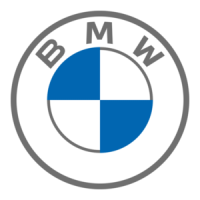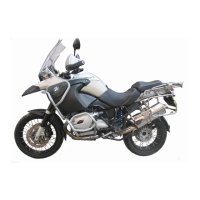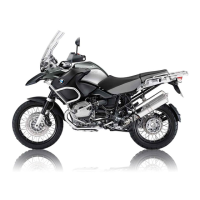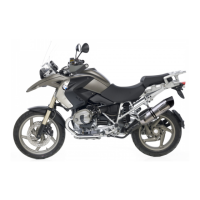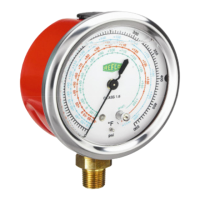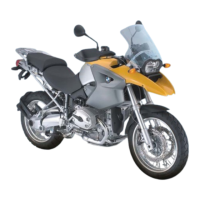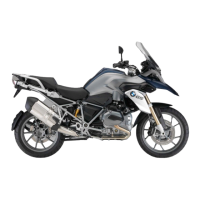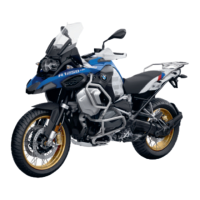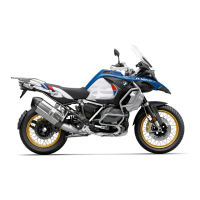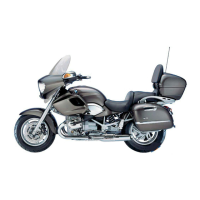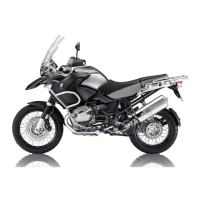
Do you have a question about the BMW R 1200 GS Adventure 2011 and is the answer not in the manual?
| Displacement | 1170 cc |
|---|---|
| Bore x Stroke | 101 mm x 73 mm |
| Compression Ratio | 12.0:1 |
| Fuel System | Electronic fuel injection |
| Front Brakes | Dual 305 mm discs, 4-piston calipers |
| Seat Height | 890 / 910 mm (adjustable) |
| Dry Weight | 223 kg |
| Weight (wet) | 256 kg |
| Tires Front | 110/80 R19 |
| Tires Rear | 150/70 R17 |
| Final Drive | Shaft drive |
| Engine Type | Air/oil-cooled flat twin ('Boxer') 4-stroke engine, two camshafts and four radially aligned valves per cylinder, central balancer shaft |
| Power | 110 hp (81 kW) at 7750 rpm |
| Torque | 120 Nm @ 6, 000 rpm |
| Transmission | 6-speed |
| Frame | Steel tubular frame |
| Front Suspension | Telelever with 41 mm telescopic fork |
| Rear Suspension | Paralever |
| Rear Brakes | Single 265 mm disc, 2-piston caliper |
| ABS | BMW Motorrad ABS |
| Width | 980 mm |
| Height | 1450 mm |
| Wheelbase | 1, 510 mm |
| Fuel Capacity | 33 liters |
| Fuel Capacity (US gallons) | 8.7 gallons |
Explains the various readouts and indicators shown on the multifunction display.
Details the significance of various status indicators and warning lights displayed on the motorcycle.
Lists and explains the function of different warning and telltale lights on the instrument panel.
Details the presentation of warnings and their meanings, including those indicated by general warning lights.
Explains how to operate the ignition switch, lock the handlebars, and use the keys.
Explains the function of the ABS system and how to activate/deactivate it.
Details the operation of the ASC system, including deactivation and off-road mode.
Explains how to set spring preload for the front and rear suspension based on load and terrain.
Explains the ESA system for electronically adjusting suspension settings.
Covers essential rider safety, including correct clothing and load management.
Provides a pre-ride checklist of important functions, settings, and wear limits.
Details the procedure for starting the engine, including pre-ride checks and self-diagnostics.
Explains the partially integral brake system, how ABS works, and its effects on surface irregularities.
Details the ASC system, how it works, and its design baseline.
Explains the function of the RDC system, tyre pressure ranges, and temperature compensation.
Explains the ESA system for electronically adjusting suspension settings.
Describes straightforward procedures for checking and replacing wear parts and lists tightening torques.
Details how to check the operation of the brakes and the thickness of brake pads.
Provides instructions and warnings for jump-starting the motorcycle's engine.
Covers battery maintenance, charging procedures, and removal/installation.
Lists common engine starting issues and their corresponding rectification procedures.
Provides a table of torque specifications for various threaded fasteners on the motorcycle.
Details the engine's design, displacement, bore, stroke, compression, output, and torque.
Specifies recommended fuel grades, usable capacity, and reserve fuel quantity.
Lists engine oil capacity, recommended grades, viscosity classes, and topping-up quantities.
Specifies brake types, including disc and caliper details, and brake pad materials.
Details electrical ratings of sockets, fuses, battery type, capacity, and spark plug specifications.
Describes BMW's extensive after-sales service network and the importance of authorized dealerships.
Details the BMW Pre-delivery Check and the importance of regular maintenance.
